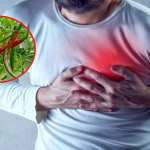Silent Heart Attacks
Introduction
A silent heart attack is a heart attack that occurs without causing noticeable symptoms — or at least, without causing symptoms so severe that the victim cannot ignore them. Because it doesn’t produce symptoms, a silent heart attack is diagnosed only retrospectively, when evidence of a myocardial infarction (heart attack) is found on an electrocardiogram in a person without a clinical history of having had a heart attack. Usually, the diagnosis is made when the patient is seeing a doctor for a completely unrelated reason.
:max_bytes(150000):strip_icc():format(webp)/heart-attack-GettyImages-513089007-57572c2a5f9b5892e81ad193.jpg)
When the diagnosis of a prior heart attack is finally made, typically both the patient and the doctor are surprised.
Causes
Most of us tend to think about a myocardial infarction (heart attack) as a pretty dramatic event — and most of the time, it is. A heart attack usually occurs when an atherosclerotic plaque in one of the coronary arteriesruptures. The rupture causes a blood clot to form in the artery, leading to an acute blockage. The heart muscle being supplied by the blocked artery immediately becomes ischemic (starved for oxygen), which typically leads to chest pain or other alarming symptoms. Unless the blockage is relieved within a few hours, the ischemic heart muscle dies. It is the death of a portion of heart muscle that constitutes a heart attack.
Most often, the symptoms caused by a blocked coronary artery are severe enough that most people having this problem quickly seek medical help. However, it is not uncommon for people to suffer myocardial infarctions without noticing symptoms that compel them to see a doctor.
Current estimates are that about 20% of heart attacks go undetected until some time after the event is over. The problem, of course, is that acute therapy cannot be given if everyone is unaware that a heart attack is occurring, and rapid therapy is critical if the amount of heart muscle damage caused by a heart attack is to be minimized.
Symptoms
Symptoms of a “typical heart attack.” Most people who are having a heart attack know right away that something is very wrong. Typically, they experience severe chest pain or some other form of extremely oppressive chest discomfort. And while the pain or discomfort may be “atypical” (for instance, it may affect the neck, shoulders, or back instead of the chest itself), it is usually quite difficult to ignore. Additional symptoms are often present, which may include breaking out into a cold sweat, shortness of breath, or a feeling of impending doom. In short, a heart attack is usually more than merely “noticeable” — it is often as subtle as being hit in the face by a two-by-four.
Why some heart attacks are “silent.” Given these usual symptoms, it may be surprising to hear that, for a substantial minority of people who have heart attacks, the heart attack causes no alarming symptoms.That is, the heart attack occurs — a coronary artery is blocked by a blood clot and some of the heart muscle dies — without the victim being aware that anything, in particular, is happening.
There are several reasons why some people may have heart attacks without apparent symptoms. These include:
- Some people simply have high pain thresholds or a very high tolerance for pain, and simply do not “notice” symptoms that would be difficult for the rest of us to ignore.
- Certain medical conditions, especially diabetes and chronic kidney disease, can affect the nerves that carry pain impulses, so the symptoms of angina or a heart attack are blunted.
- In some people, cardiac ischemia may simply produce atypical symptoms. Instead of experiencing angina, for instance, they may experience dyspnea (shortness of breath), transient weakness, or other non-specific symptoms that most people would not immediately relate to their heart. “Atypical” symptoms with cardiac ischemia are especially likely in women.
- Some people, especially when symptoms are relatively non-dramatic, are simply very good at ignoring the signs and symptoms of a heart attack, and are able to brush them off as being due to a cold, heartburn, or “something I ate.”
- Age and sex are associated with silent heart attacks. Heart attacks are more likely to be silent in older people, especially those over 75. They are also seen more commonly in men than women.
When you add all these reasons up, it appears that about one out of five heart attacks turns out to be silent.
Diagnosis
Because a silent heart attack does not produce symptoms that cause the victim to seek medical help, the diagnosis is only made after the fact — after the damage has been done. At some point in the future, a doctor typically will notice that heart damage has occurred by examining an electrocardiogram. The diagnosis usually can be confirmed by performing an echocardiogram, in which a portion of weakened heart muscle can be visualized; or with a thallium or Cardiolyte scan, which will show that part of the heart muscle is not receiving its normal blood flow.
Treatment
Once you are found to have had a silent heart attack, two important facts are now known about you. First, you have significant coronary artery disease (CAD).
And second, your symptoms cannot be relied upon as a measure of how severe your CAD is, or how adequately it is being treated. That is, the absence of symptoms (such as angina) is not a reliable indicator that treatment is working, or that your CAD is stable.
If you have had a silent heart attack, you should receive all the same treatments as for any other person who has survived a heart attack. Treatment should be aimed at:
- Preventing further ischemia with medication, and possibly revascularization (with stents or bypass surgery).
- Preventing the onset of heart failure.
- Preventing death from cardiac arrhythmias.
In addition to this standard post-heart attack therapy, people who have had silent heart attacks may need additional treatment based on the results of a stress test.
While stress testing can be useful in almost anyone who has a heart attack, it is particularly important in evaluating people who have had a silent heart attack.
The stress test can serve two important purposes in people who have had silent heart attacks. First, it may allow your doctor to measure the “threshold” of exercise that produces ischemia in your case. That is, your doctor may be able to give you specific instructions regarding which activities it is safe for you to perform. Since you cannot use the onset of angina as a warning that you are doing too much, this kind of advice can be very important.
And second, when ischemia occurs during a stress test, even people who have had silent heart attacks and/or silent ischemia will often feel “something,” even if it is not typical angina. So, the stress test can give important feedback to people with silent ischemia — it can teach them that “this is what ischemia feels like in your case.” In the future, whenever you experience “this” sensation whether it is mild discomfort in the shoulder, shortness of breath, sudden fatigue, or whatever it may be, it means you are probably having an “angina equivalent,” and you should immediately stop what you are doing and follow your doctor’s instructions for treating angina(such as taking a nitroglycerin tablet).
Prognosis and Coping
You can die from any heart attack. While a reasonable argument can be made that once death occurs the heart attack can no longer be considered “silent,” in many individuals with CAD the very first sign or symptom they experience from their condition is sudden death. Indeed, many people who die very suddenly, without any prior history of cardiac problems, in fact, have significant CAD — and quite likely they experienced many episodes of “silent” ischemia, and possibly even silent heart attacks, prior to their fatal cardiac arrest.
People who appear well but are diagnosed with silent heart attacks appear to have somewhat worse long-term prognosis than people whose heart attacks were diagnosed and treated promptly. The increased risk is probably related to the high prevalence of diabetes or kidney disease in these people, their commonly advanced age, and the fact that subsequent episodes of cardiac ischemia are also likely to be “silent,” and thus are unlikely to be treated promptly.
What this means is that — while anyone who has had a heart attack needs to take all their prescribed medications religiously, aggressively manage their lifestyles to reduce their risk of future heart attacks, and pay attention to any unusual or unexpected symptoms that might possibly indicate a heart problem — these steps are especially important for anyone who has had a silent heart attack.
A Word From Verywell
CAD, even very significant CAD, does not always produce the typical symptoms described in the medical textbooks. Cardiac ischemia and even heart attacks are fairly common in people who have never had symptoms suggesting CAD. People who have had silent heart attacks especially need to pay particular attention to their hearts to prevent further cardiac damage.
If you have several risk factors for CAD, such as smoking, living a sedentary life, being overweight, or having high cholesterol or hypertension, the absence of symptoms should not be taken as proof that everything is fine with your coronary arteries. You should talk to your doctor about what you can do to reduce your high risk, before you suffer further, possibly irreversible, damage to your heart or worse.


